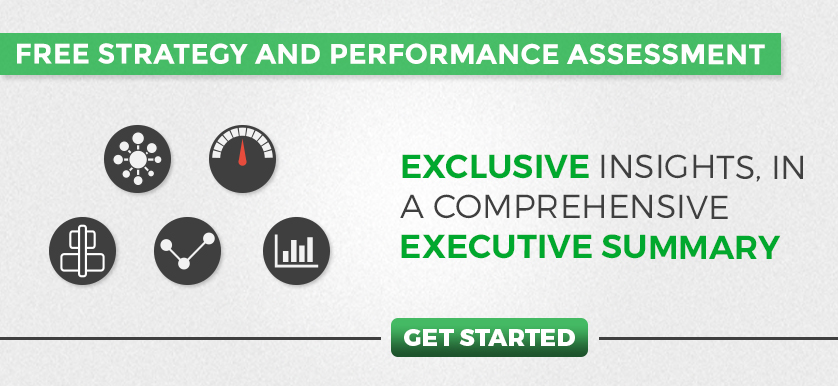Is Your Organizational Culture Performance-Oriented?

Image Source – Freepik
Culture is an intriguing component of the organizational system, wouldn’t you say? Although most professionals agree on the importance of building a strong organizational culture, measuring the extent to which this goal has been achieved is quite challenging, and the tools for doing so have been few and far between. Fortunately, one such tool enables us to get the pulse of the organizational culture—the Global Performance Audit Unit’s performance culture audit.
Another way to get an idea of the state of an organization’s culture is to use metrics. For example, Sears uses what it calls Total Performance Indicators (TPIs) to monitor employee attitudes and retention. Similar to key performance indicators (KPIs), TPIs also relate to the more quantitative aspects of measurement. Using metrics to monitor performance or inform decision-making is always useful, but can we actually capture organizational culture in one metric or index?
Culture is a phenomenon that happens naturally in any group without necessarily being guided. Thus, it will always be a reflection of the people’s attitudes within that group. Culture appeals more to emotion than reason. Elusive and intangible, culture is something that can be easily felt but difficult to explain or justify.
Read More >> How to Sustain a Performance Culture That Drives Growth and Innovation
Organizational culture embeds the beliefs and values that define a company, which serve to guide employees in their daily actions. Culture is a reflection of the company’s spirit, and to a large extent, I believe that an organization’s worth is equal to the value of its people.
Performance is a concept usually associated with processes that are more technical than cultural, such as financial performance or machinery performance. So why would anyone want to have a performance-oriented culture? For many people, this may seem like a very cold and profit-oriented working environment. In practice, there are several reasons to embed performance within your organizational culture:
Impact on Internal Stakeholders
- Increases accountability regarding the quality of their work
- Raises awareness on the importance of being efficient and results-oriented
- Nurtures constant learning and professional improvement
- Brings clarity on their roles and contributions to the organizational strategy
- Increases engagement by rewarding performance
Impact on External Stakeholders
- Positions the organization as a trustworthy and reliable partner
- Influences the quality of products and services positively
- Enhances customer experience
- Improves employer brand and market image
A change management initiative to shift organizational culture to a performance-driven perspective can become quite an advantage for companies wishing to get ahead of their competition. To have more clarity around what a performance-oriented culture looks like, consider the following key attributes:
- Shared Vision
- Strong leadership is essential for any organization. Strong leaders can communicate their vision and inspire employees to follow them. This shared vision brings and keeps people together, empowering them to work as a team.
- Communication
- Intense and effective communication increases employees’ awareness and understanding of the company strategy. This impacts how they work and can help them make better decisions in full alignment with strategic directions.
- Transparency regarding decisions and performance levels establishes greater levels of credibility and confidence in relation to leadership and generates employee interest towards understanding the impact of their actions on bottom-line results.
- Continuous Learning
- A performance-oriented culture acts as an enabler for implementing a performance management system (PMS) within the company. Monitoring performance facilitates the development of a constant learning process for the entire organization.
- A performance-oriented culture not only sets targets but also provides employees with the necessary training or mentoring to achieve these targets.
- Process Improvement
- A common characteristic of performance-oriented organizations is their concern for constant optimization. By not being satisfied with “good” and always striving for “great”, the people in the organization adopt a state of mind in which they are constantly striving for efficiency.
- Data Analytics
- In the age of big data, we need to make sure that both the younger and older generations are accustomed to working and making use of data in their decisions. Modern organizations must have the competencies and habits of data analysis.
- Technology
- Progress in today’s business environment is limited without the support of modern technology. A performance-driven organization will invest in technology to support business processes.
- Innovation
- Technological growth will be conditioned by the organization’s ability to adapt to market dynamics and innovate to stay ahead of the competition. Innovation comes from employees, but what can make a difference between two companies that have the same talent pool is how each one manages to nurture innovation among its employees.
- Rewards
- A performance-oriented culture reflects a working environment where effort and success are acknowledged and rewarded. Rewards don’t have to be exclusively financial.
- Engagement
- A performance culture should nurture employee engagement through its employee-centered initiatives.
- Authenticity
- Organizations should be able to identify their uniqueness and acknowledge and promote it among stakeholders. This is what makes a company feel real and meaningful for its employees, customers, and business partners. For example, Zappos prides itself on its authenticity, which is reflected in one of its corporate values—weirdness.
Read More >> How Is the Skills-First Approach Redefining the Workforce?
The myriad of benefits that stem from a performance-oriented culture should be reason enough for any organization to adopt it. However, it’s worth noting that culture can be inherently divisive, especially when change is in the air. Leaders must take care when shifting from a culture that many of their employees have grown accustomed to in order to mitigate friction and foster buy-in.**********
Editor’s Note: This article was originally published on March 12, 2016. It has been updated as of April 16, 2025.
Tags: Organizational Culture, Performance Culture, performance-oriented





